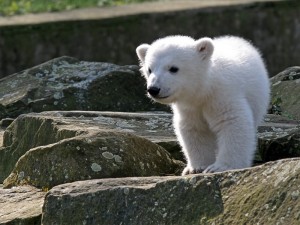FRIDAY, 25 MARCH 2011
Knut’s death was witnessed by hundreds of visitors to the zoo who reported seeing him convulsing, turning around in circles and falling into the moat in his enclosure. His death came as a surprise to everyone as polar bears have been known to live into their thirties in captivity.Knut became famous after he was rejected by his mother and raised by zoo keepers. This drew protests from animal rights groups who thought he should be put down and not made to live out a life of humiliation in captivity. The public rallied against this and Knut became a celebrity figure, raising millions of euros for Berlin Zoo, inspiring merchandise, a film, and even appearing with Leonardo di Caprio on the cover of Vanity Fair’s green issue. Fans have left tributes by his enclosure and the Berlin Natural History Museum is currently in talks with the zoo over the possibility of stuffing Knut so that fans can still visit him.
Some animal psychologists have suggested that Knut may have suffered from behavioural issues, becoming withdrawn after the death of his original keeper Thomas Dörflein and dependent on attention from crowds. Stress due to being housed with three older female polar bears has also been debated. The zoo denies any accusations of negligence and claim Knut was healthy [1]. His death has once again raised the issue of whether such naturally powerful animals should be kept in zoos, in spite of their education value and the conservation of an individual member of a vulnerable species.
Written by Zoe Li

